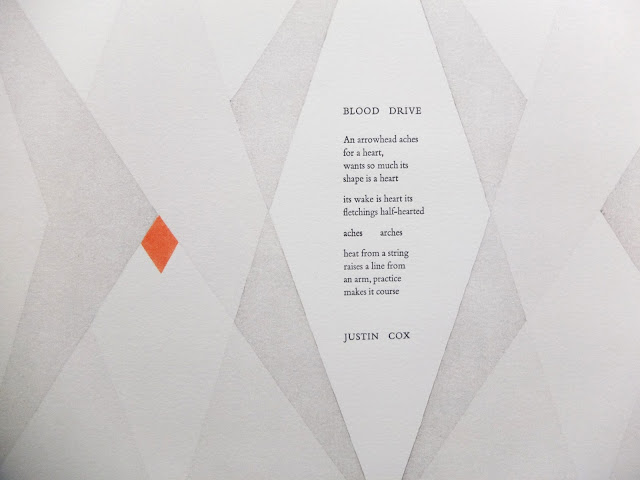On the way there, we stopped at Bixler Press & Letterfoundry. If you ever get the chance, I highly recommend stopping by to see this rare place. Contact Michael Bixler beforehand so that he can make time for you.
I was really excited to go back to WSW this summer to teach The Missing Link: Islamic Papermaking. I hadn't ever seen the space when it wasn't completely covered in snow, so it was almost like being there for the first time. The staff and interns were an enormous pleasure to work with, the environment and food was amazing, and the students were hard-working and deeply interested in the process, history and application of everything we learned in this 5-day intensive workshop.
He had so much lovely equipment, space, and of course, type! These are the cases of matrices to cast letters
Here is a matrix for 18 pt Garamond I believe. What a treat!
Women's Studio Workshop is a little haven in the middle of the woods and hills. Pictured here is their Art Farm where they grow fibers for papermaking life kenaf, and rye, and dye plants like indigo. That awesome person in the corner is their studio coordinator, Chris Petrone- one of the big reasons for the excitement of being back
I started the first day of class with a slide presentation about the history of papermaking, the tradition of papermaking in India, the process used in the 13th century and today, and how the politics of the nation changed the face of papermaking in India.
The rest of the first and all of the second day were spent making paper. Each vat had a different fiber so that people could experiment. People definitely had favorites! We had a cotton/abaca blend, flax, fermented hemp, and raw hemp that we cooked and beat as part of class on the first day.
At the end of each day, we pressed paper the way it was pressed in the 13th century! It was quite a social exercise as you can imagine
For the second day we dyed some raw hemp and cotton/abaca in indigo and set up a vat
It made for a deep blue paper. I love how Lauren's shirt matched the vat that day
The third and fourth day were my favourite: dye and size days! As a class, we cooked avocado and yellow onion dye. I with a lot of help from the interns, had prepped black tea dye, logwood dye, cutch, osage orange, lac madder, madder, wheat size and egg white size for everyone to try out. We also had the indigo vat going for overdyeing the next day.
The papers always look so pleasing hanging up on the line to dry. We mordanted using a weak alum and homemade iron solution
Part of the fourth day, and most of the fifth day was spent burnishing the sheets to a high shine
Everyone's stack of paper, and the hands that made it!
We got a lovely range of shades, and everyone left with a hefty stack of beautifully finished papers
On our way back to Cleveland, we stopped at the Delaware Water Gap- a natural formation that is 500 million years old
















































